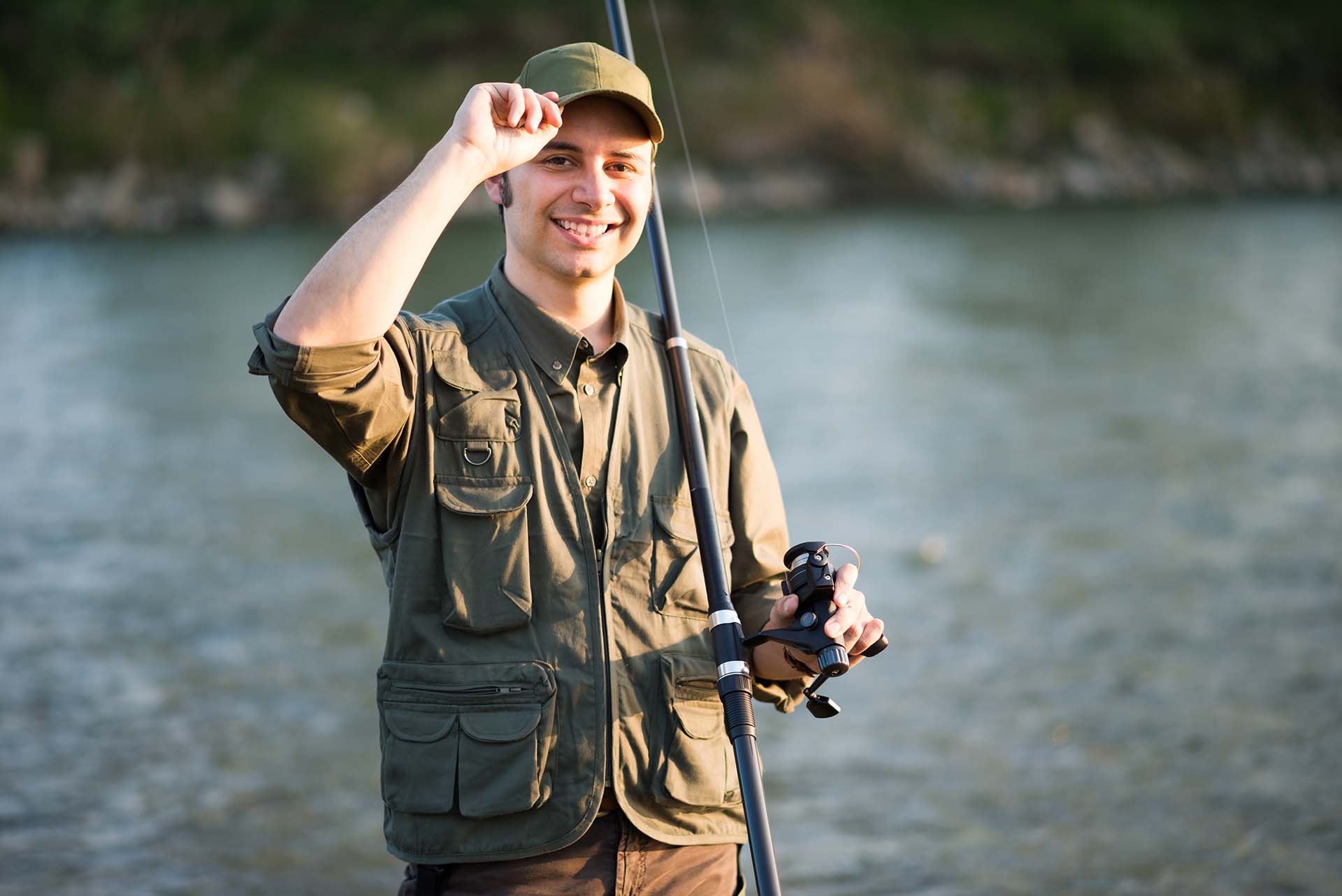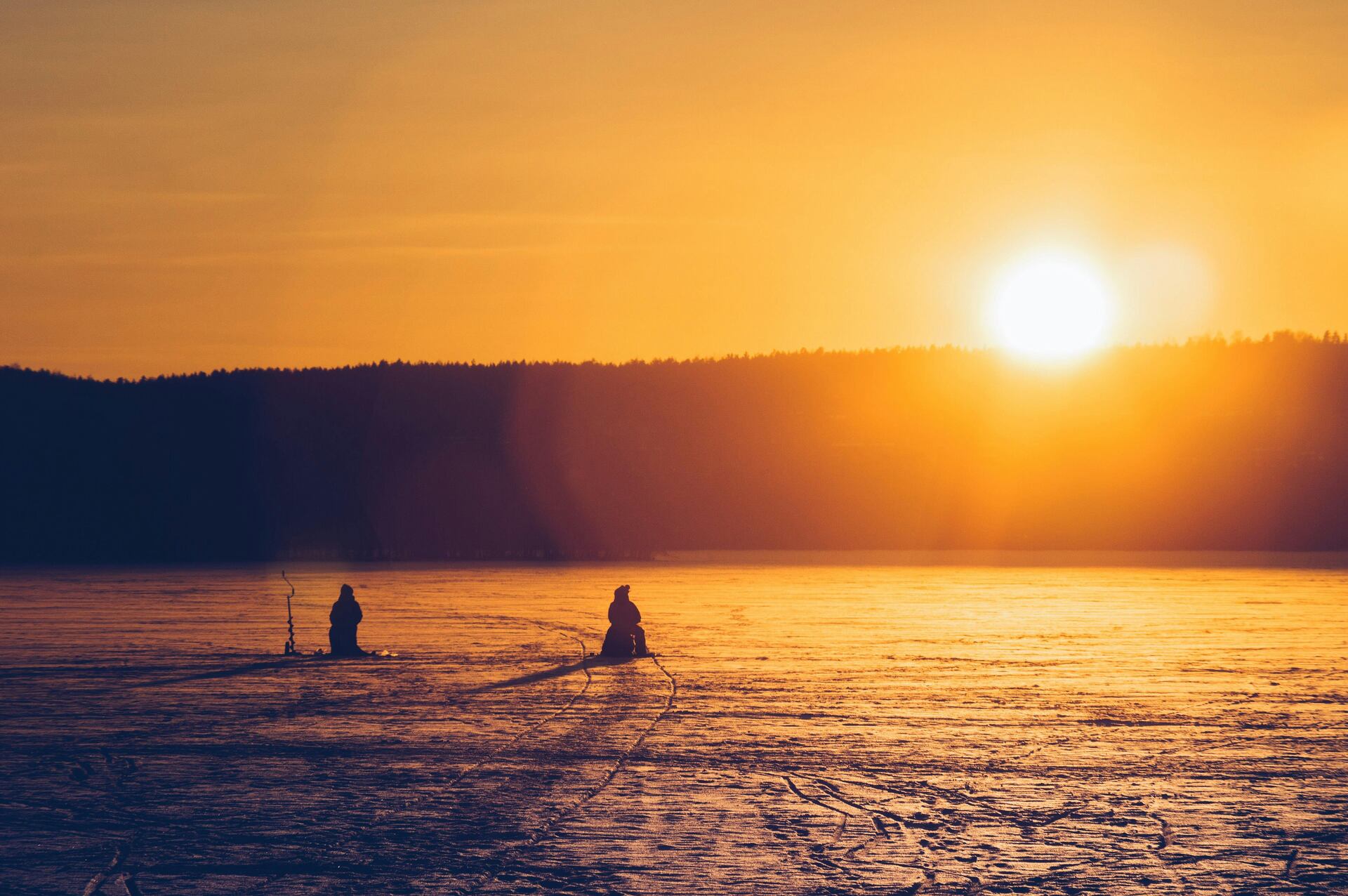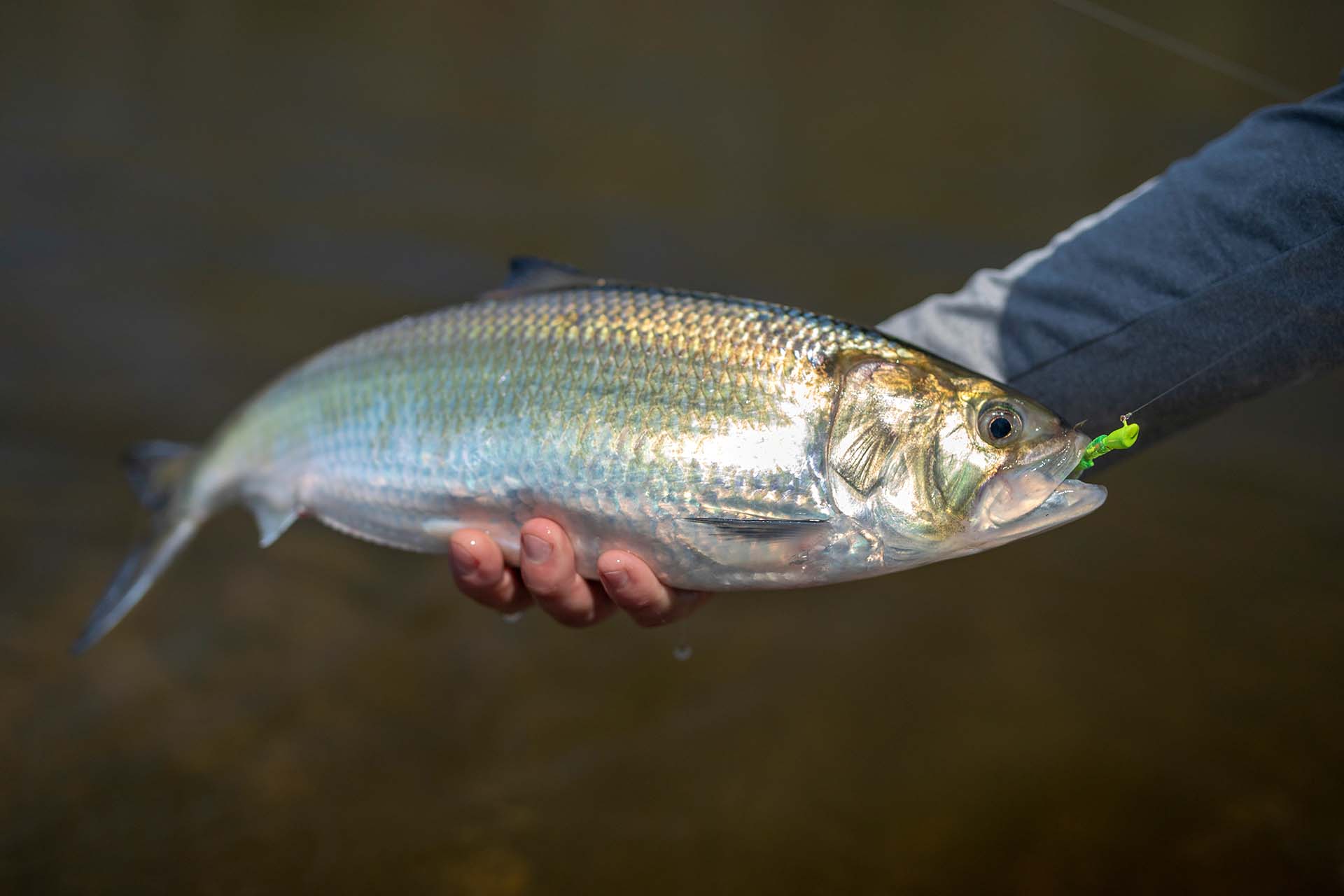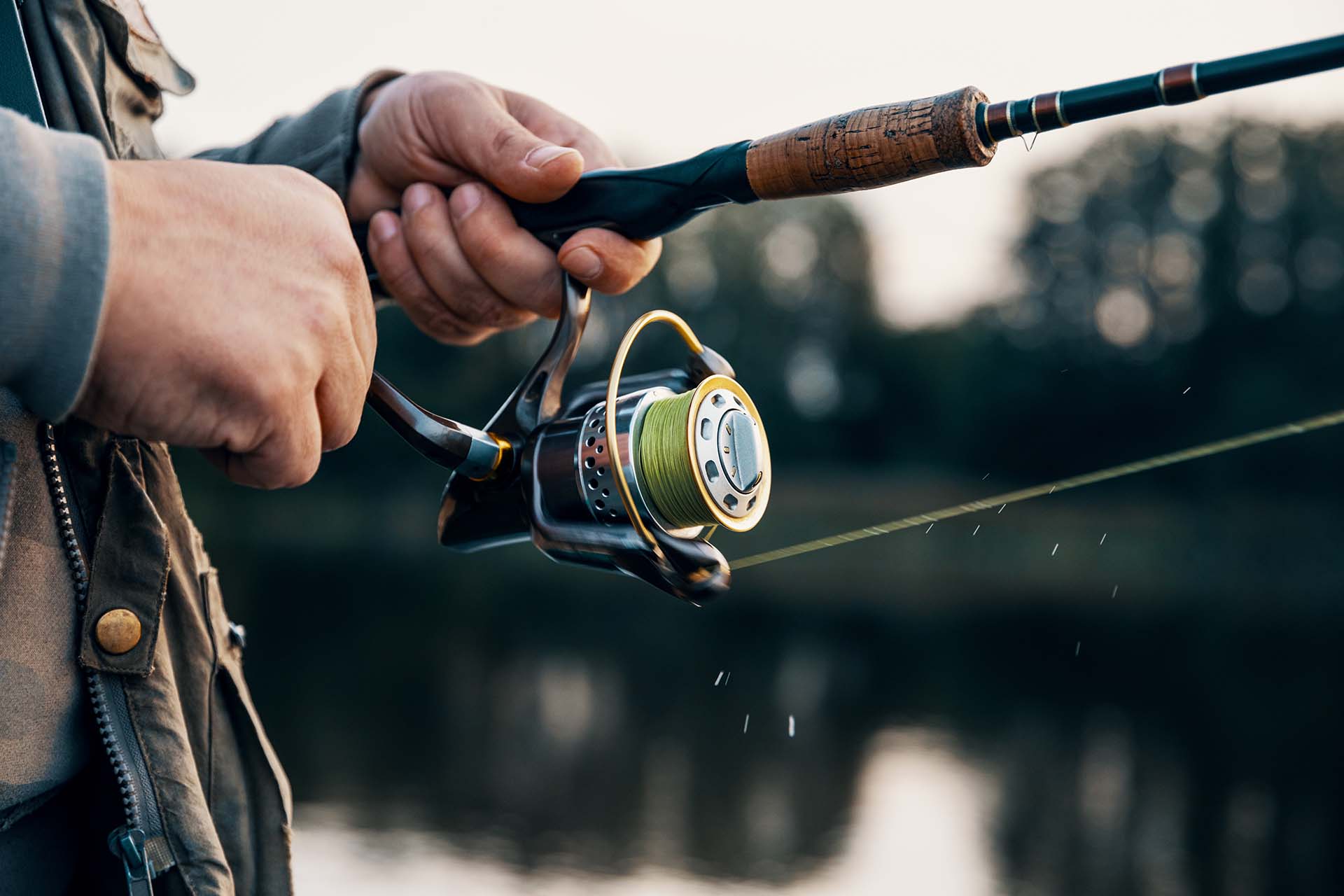You know those days when you can’t decide if you should grab your rain jacket or prepare for a scorcher of the day? When fishing with clouds in the sky one thing is clear – color plays an important role! So, what color lures to use on cloudy days? Unveil the secrets of matching shades to the mysterious interplay of light and water, unlocking the potential for unforgettable angling experiences.
On cloudy days, it is recommended to use lure colors that provide contrast and visibility in low-light conditions. Bright and fluorescent colors can attract attention and stand out against the muted background. And as you can see, choosing the right hue can mean success or failure on those not-so-sunny afternoons spent angling for your favorite catch. So, let’s check out all you need to know about this fishing topic.
Understand the Effect of Cloudy Days on Fishing
Cloudy days, with their enigmatic veil of gray, possess an intriguing influence on the ancient art of fishing. As sunlight battles through the thick canopy of clouds, a remarkable transformation occurs beneath the water’s surface. Shadows dance and mingle, creating an ethereal symphony of concealment. Sensing the celestial theater unfolding above, the fish grow bolder, venturing out from their secretive depths.
In this shrouded realm, their keen eyesight becomes less acute, offering an advantage to the patient angler. The murky veil becomes a cloak of opportunity, a chance for anglers to test their skill and intuition, adapting their techniques to the mysterious interplay of light and water.
As the clouds disperse and sunlight reclaims its throne, the fish return to their elusive refuge, leaving a sense of wonder and a longing for the next overcast adventure. And when you consider all this, it’s only natural to wonder what color fishing lures to use on cloudy days, right?
How Clouds Affect Light Penetration in Water?
Clouds, those ephemeral guardians of the sky, hold within them a captivating influence on the penetration of light into water. As they blanket the heavens, an intriguing dance between sunbeams and the aqueous realm takes place. Cloud cover acts as a natural filter, diminishing the intensity of sunlight that reaches the water’s surface. The once radiant rays become diffused, scattering in myriad directions.
This diffusion affects how light interacts with the aquatic environment, altering its reach and quality. The dimmer illumination casts a softer glow below, enhancing the visibility of objects submerged beneath the surface. Yet, it also reduces the overall amount of light available, affecting the perception and behavior of aquatic life.
As sunlight battles through the cloudy veil, the wavelengths of light transform, leading to shifts in color perception underwater. Reds and oranges, being longer wavelengths, are absorbed more rapidly, leaving behind a predominantly blue-green hue. This altered color spectrum influences the appearance of lures, bait, and the surroundings, ultimately impacting the success of fishing endeavors.

Changes in Fish Behavior During Cloudy Conditions
Cloudy conditions, with their atmospheric shifts and altered lighting, have a profound impact on the behavior of fish, transforming their underwater realm into a dynamic stage of change. As the skies become veiled in gray, several key shifts in fish behavior come into play.
Increased Boldness
Cloud cover provides a sense of security for fish, encouraging them to venture out from their hiding spots. The reduced sunlight and resulting shadows offer a protective cover, encouraging fish to explore open waters and expose themselves more readily to potential prey or lures.
Heightened Feeding Activity
Cloudy conditions can trigger an upsurge in feeding behavior among fish. The muted light levels create an atmosphere of opportunity, signaling to fish that it’s an optimal time to actively search for food. They become more receptive to bait and lures, displaying increased aggression and voracity in their pursuit.
Shallower Movements
Fish tend to move closer to the surface during cloudy conditions. With reduced light penetration, the upper layers of water become more enticing as they offer a more visible and accessible hunting ground. Anglers may succeed by targeting shallower areas and adjusting their fishing style accordingly.
Altered Color Perception
The diffusion of sunlight through clouds modifies the color spectrum underwater. Reds and oranges, absorbed more rapidly, diminish in intensity, while blue and green hues become more pronounced. As a result, fish perceive their environment differently, impacting their response to different-colored lures and baits. Adjusting lure selection to match the prevailing color shifts can greatly enhance success rates.
Increased Sensitivity to Vibrations
Cloudy conditions often coincide with atmospheric changes, such as low-pressure systems or approaching storms. These weather patterns can heighten fish sensitivity to vibrations in the water. Consequently, lures or bait that create subtle vibrations or movement are more likely to attract attention and elicit strikes.
Understanding these behavioral changes during cloudy conditions enables anglers to adapt their strategies accordingly. By capitalizing on the increased boldness, heightened feeding activity, and altered color perception of fish, anglers can optimize their chances of a successful fishing expedition in these atmospheric conditions.
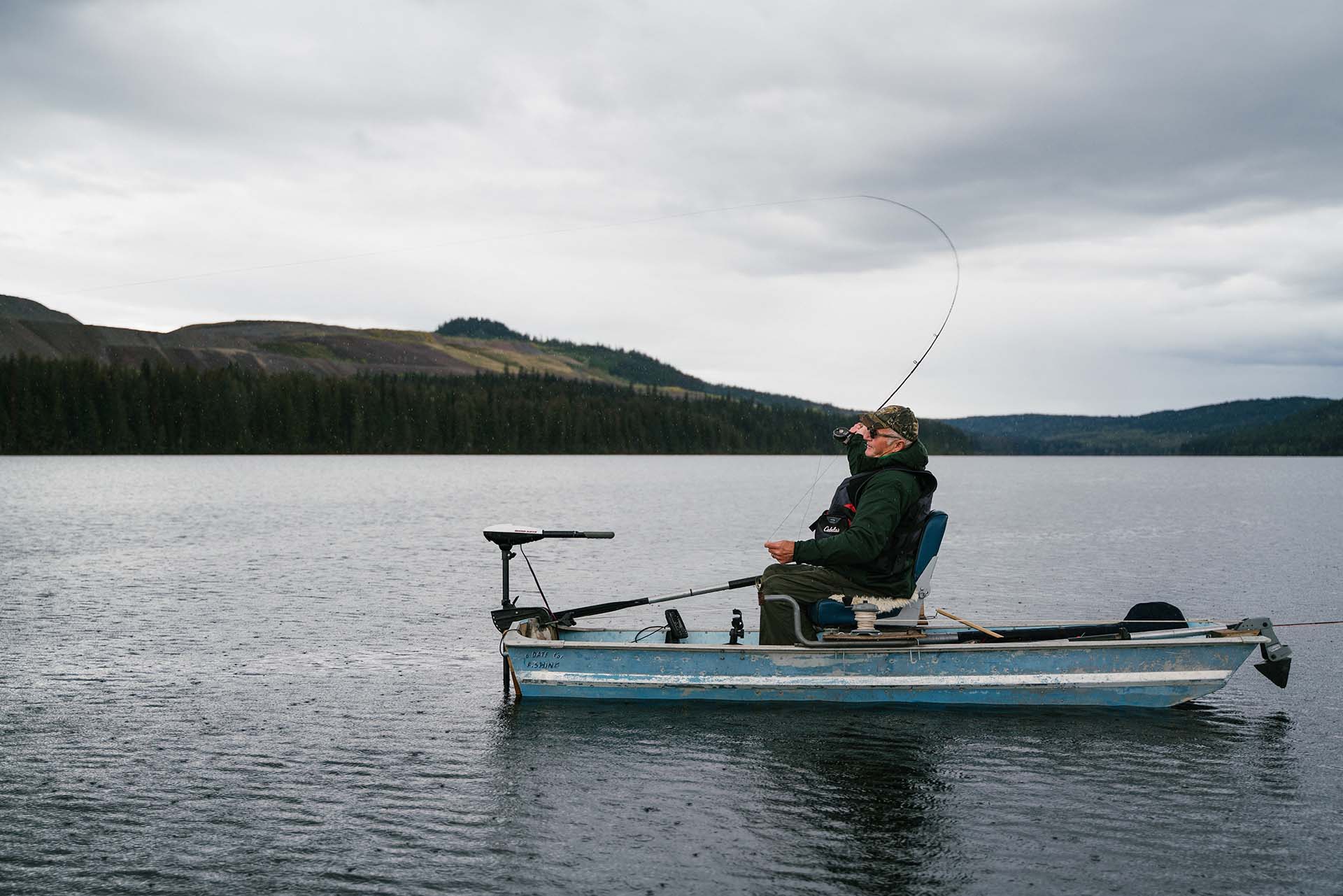
What Color Lures to Use on Cloudy Days – General Guidelines for Selection
When selecting the right color lures for cloudy days, several general guidelines can help maximize your chances of attracting fish. These guidelines take into account factors such as contrast, visibility in low light conditions, water clarity, depth, and the choice between natural colors, bright hues, or dark tones.
Contrast is Key
Opt for lures that provide contrast against the surrounding environment. Cloudy days often create dimmer lighting conditions, making it essential for your bait to stand out. Choose colors that sharply contrast with the prevalent hues underwater (the same goes for lures for nighttime angling). For example, if the water has a predominantly greenish tint, consider using lures like chartreuse or white, creating a strong visual contrast.
High Visibility
Cloudy conditions reduce light penetration, making it crucial to select highly visible lures for fish. Bright colors like fluorescent or neon shades can enhance low-light visibility. These vibrant hues can catch fish’s attention, increasing their likelihood of striking the lure.
Natural Colors vs. Dark Tones
Consider the water clarity and depth when deciding between natural colors and darker tones. In murky or stained water, natural colors that mimic the appearance of prey, such as shades of green, brown, or silver, can be effective. On the other hand, in clear water or deeper depths, darker hues like black, purple, or blue can create a silhouette effect that stands out against the lighter background.
Experiment and Adapt
Remember that fish behavior can vary depending on the species, location, and other environmental factors. Be willing to experiment with different colors and observe the fish’s response. If one color isn’t yielding results, try switching to another that provides better contrast or visibility.
What Are the Best Lure Colors for Cloudy Days
When the sky becomes an ethereal canvas of gray, the quest for the perfect color takes on added significance. The subdued lighting and diffused sunlight beneath the cloud cover call for a strategic selection of colors to entice fish. So, here are some of the best colors you can pick for your lures.
Bright and Fluorescent Colors Grab The Attention of Fish in Both Murky Water and Under the Dim Light of Gray Skies
Bright and fluorescent colors possess a unique ability to attract attention in murky water and stand out against gray skies for several reasons. In low light conditions, such as those found on cloudy days, these vivid hues create a stark contrast against the muted and subdued environment.
The vibrant colors, like chartreuse, orange, or neon shades, possess high visibility and can cut through the murky water, catching the eye of nearby fish. Additionally, these bright colors can trigger a predatory response in fish, as they resemble the vivid hues of injured or fleeing prey.
The combination of contrast and the innate instinct of fish to target conspicuous objects make bright and fluorescent colors highly effective in grabbing the attention of fish in both murky waters and under the dim light of gray skies.
Contrasting Colors Can Exploit the Diminished Visibility of Cloudy Conditions to Anglers’ Advantage
Contrasting colors enhance visibility, attract strikes, and create a silhouette effect against cloudy backgrounds. The diffused light creates a muted and less distinct environment when the sky is overcast. The stark contrast between the lure color and the background allows the fish to easily spot and track the lure’s movement, increasing its visibility and likelihood of eliciting a strike.
Moreover, contrasting colors can create a silhouette effect. Against cloudy skies, darker lure colors, such as black, purple, or blue, can create a distinct outline that stands out against the lighter background. This silhouette effect mimics the appearance of a potential prey item, making the lure appear more enticing and triggering the predatory instincts of fish.
Natural and Subtle Colors Increase The Likelihood of a Successful Strike
Natural and subtle colors of lures have a distinct advantage in overcast conditions when fish tend to be more cautious and rely on their instincts. These colors closely mimic the appearance of natural prey items, such as small fish or insects, that fish are accustomed to encountering in their environment.
In cloudy conditions, where light is diffused, and the underwater environment may appear muted, using natural colors allows the lure to blend in with the surroundings. This blending effect helps overcome the wariness of more cautious fish, and less inclined to strike during these conditions. The subtle and natural colors provide a level of camouflage, making the lure appear less conspicuous and more like a genuine prey item. This increases the chances of enticing bites from fish that might be hesitant to strike at more vibrant or contrasting lure colors.
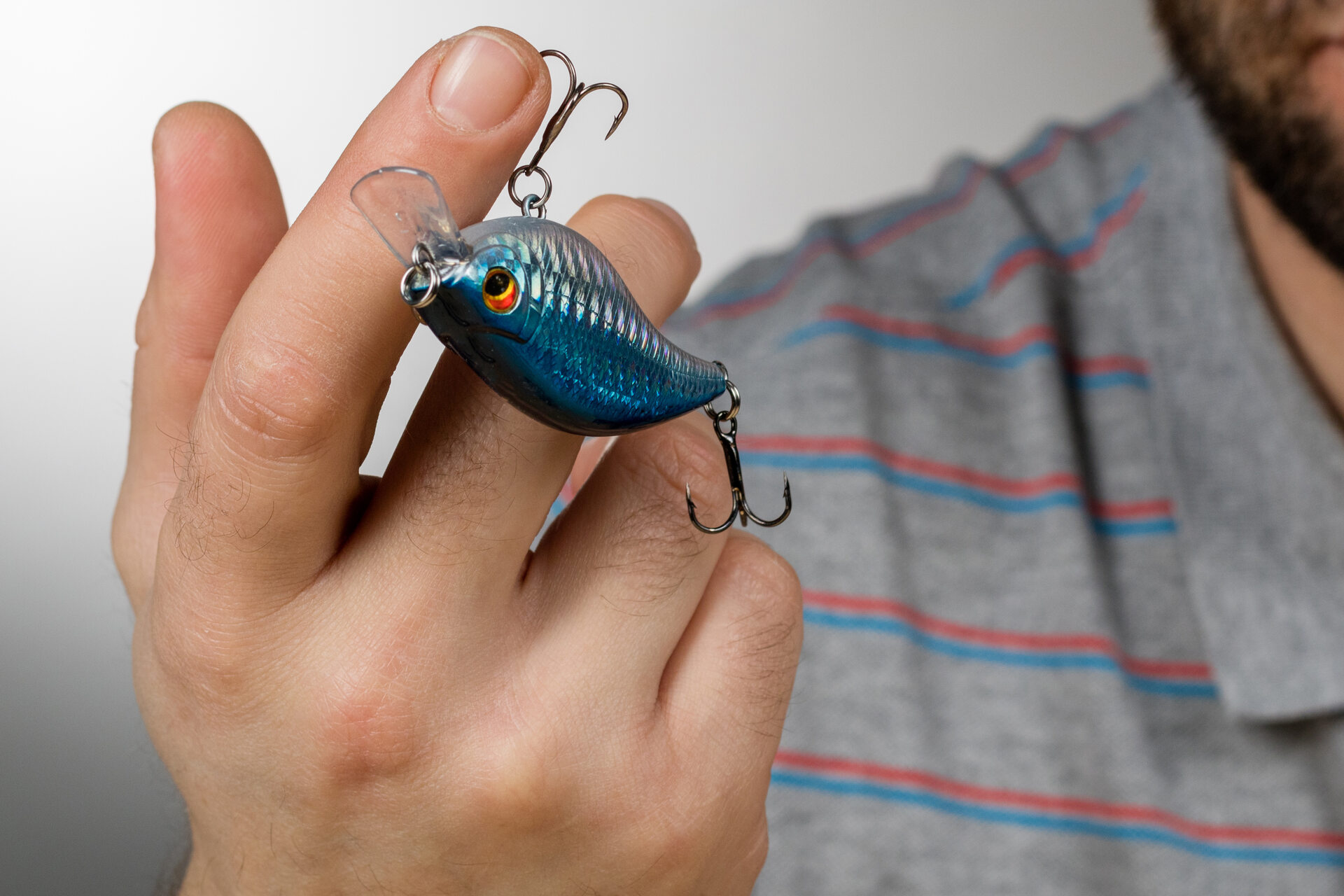
What Are Some Specific Lure Color Recommendations for Different Fishing Scenarios?
Specific color recommendations can greatly enhance your success in different fishing scenarios. Check out what would be the best solution for both freshwater and saltwater angling.
Freshwater Fishing Will Require Contrast Color Lures
In freshwater fishing, for species like bass, trout, and walleye (some of the largest fish in the USA), consider using natural colors such as green, brown, and silver to imitate their preferred prey. Opt for contrasting colors like chartreuse or white for cloudy days to increase visibility. Pay attention to specific feeding patterns during cloudy conditions, as certain fish may be more inclined to strike certain colors based on their feeding habits.
Saltwater Fishing Will Require More Natural Color of Lures
In saltwater fishing, lure color choices vary depending on the targeted species and fishing location. For example, choosing the right rod for inshore fishing won’t be enough. These species, like redfish or snook, often respond well to natural colors such as brown, tan, or olive, while brighter shades like blue or pink may entice offshore species like tuna or mahi-mahi. Consider the tidal and current conditions, as these can affect visibility, and adjust lure colors accordingly to improve success rates.
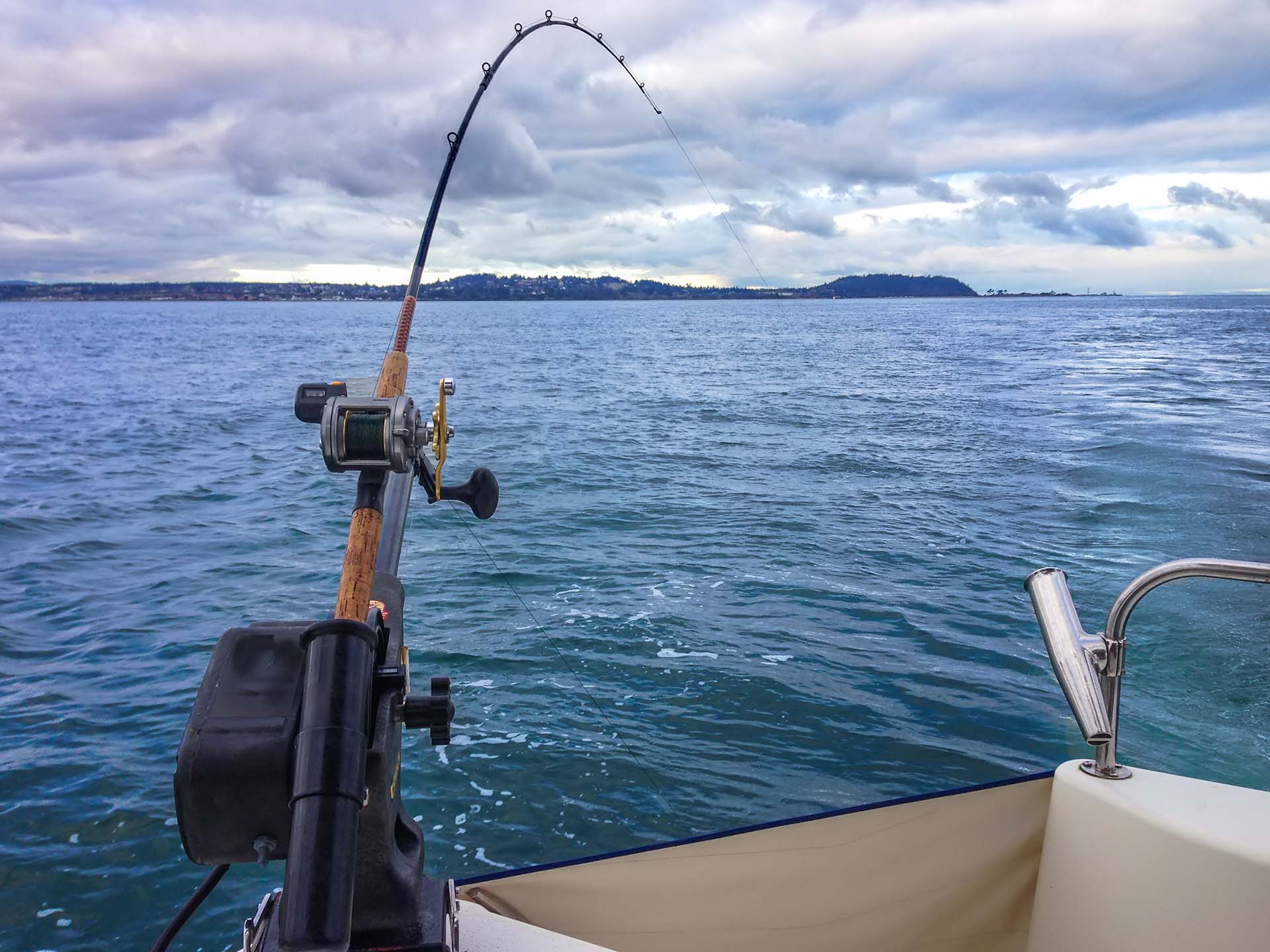
What Are Some Other Factors to Consider?
In addition to color, several other factors should be considered for successful fishing on cloudy days. Lure presentation and retrieval techniques play a crucial role in enticing strikes, as varying speeds and actions can simulate natural prey behavior. Adding attractants and scents to lures can enhance their effectiveness, enticing fish to bite. Gathering local knowledge and tapping into angler experiences can provide valuable insights into fish behavior, preferred lures, and productive fishing spots, increasing the chances of a rewarding fishing excursion.
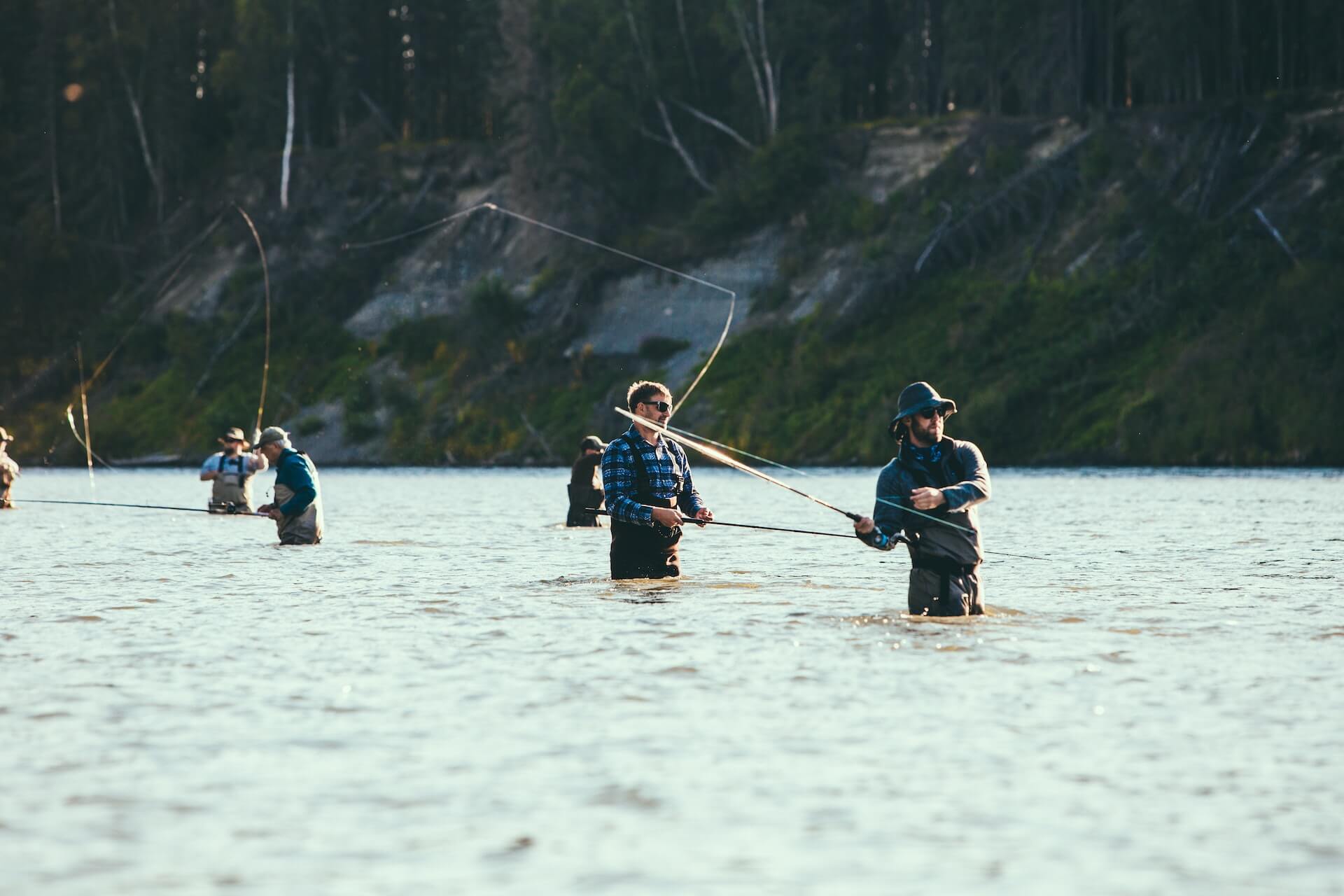
Learn What Color Lure to Pick and Have a Great Fishing Experience
It is important to remember there is no one-size-fits-all solution when it comes to selecting a color lure for fishing. However, being knowledgeable and understanding the variety of fish species will give you a better chance of a successful and enjoyable fishing experience. So take the essential information from this post and catch some fish! Remember, a happy angler equals happy fish.



